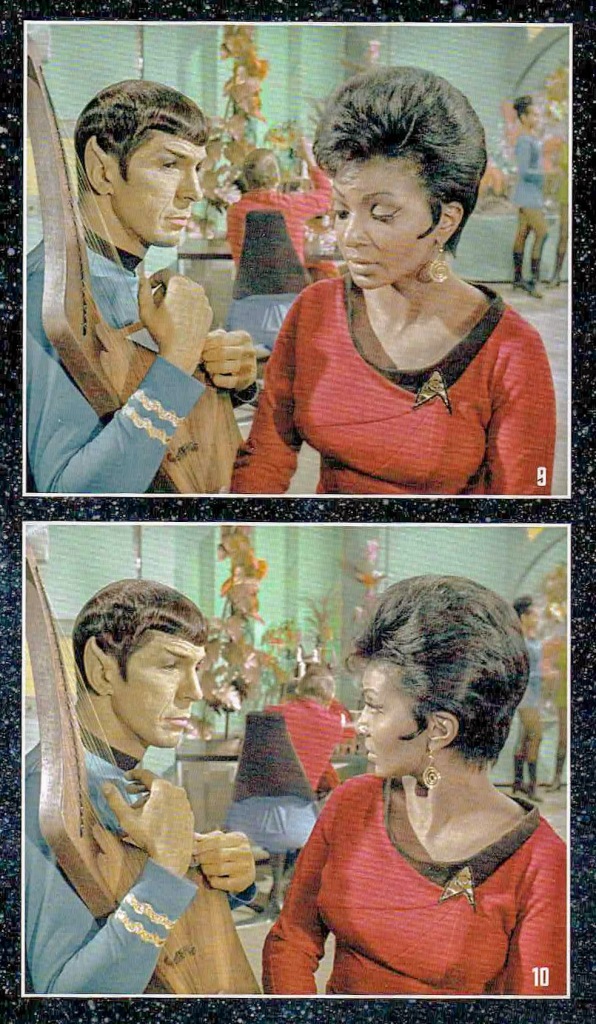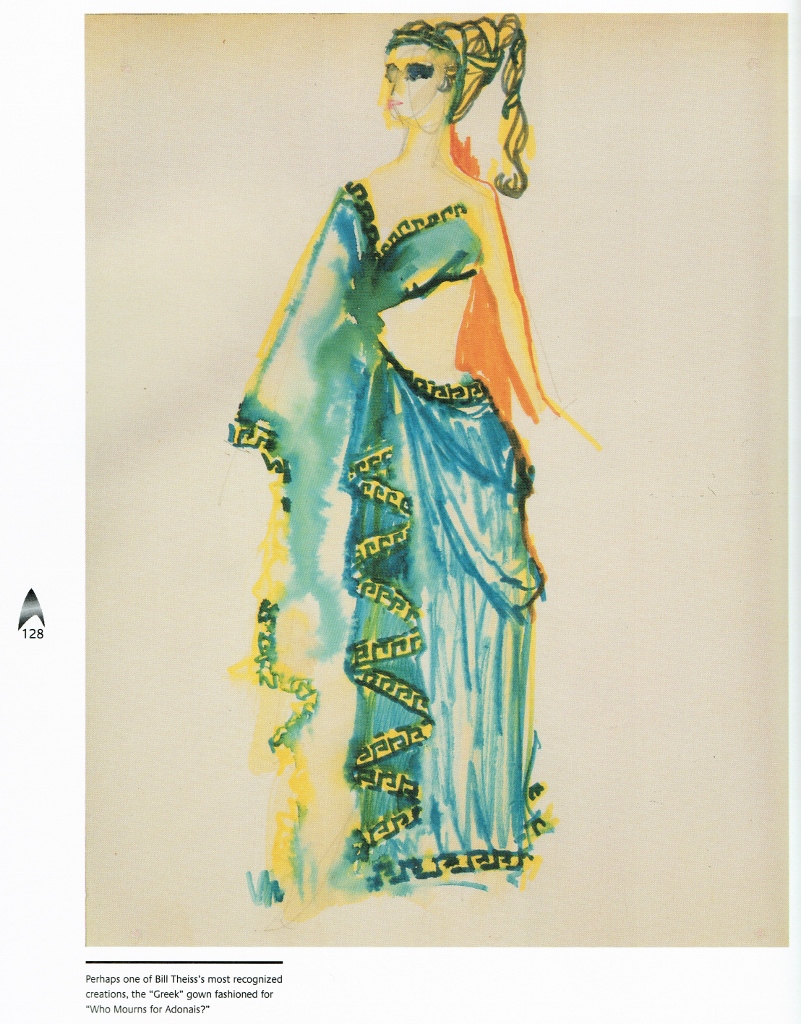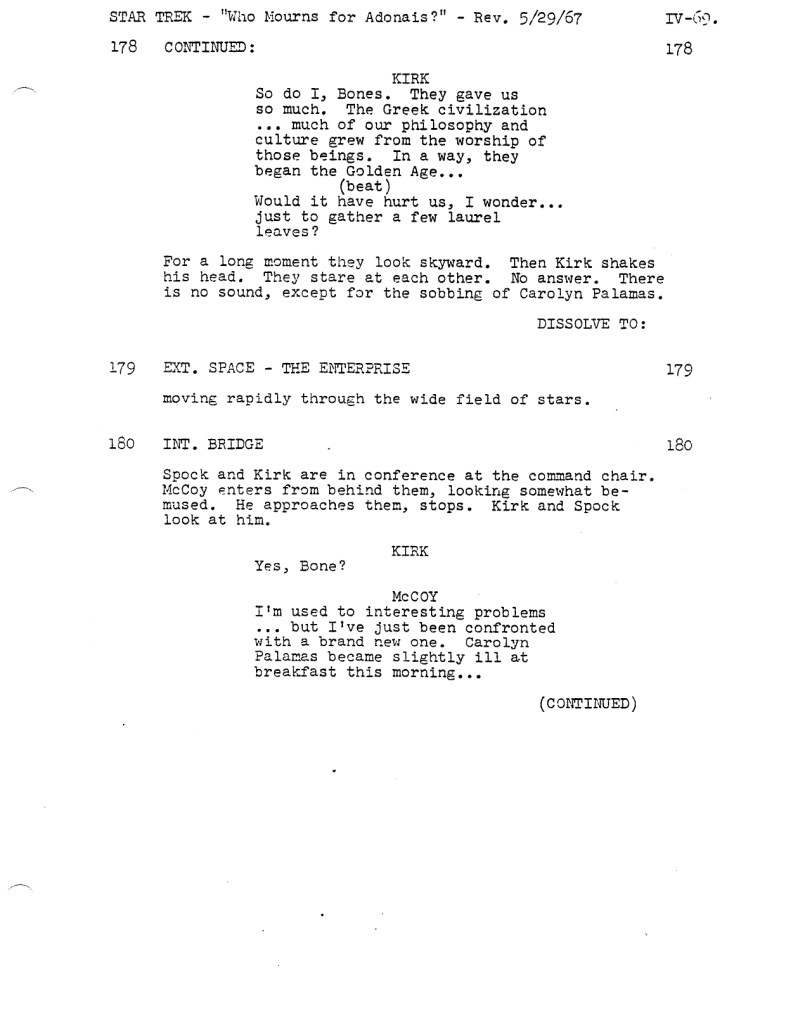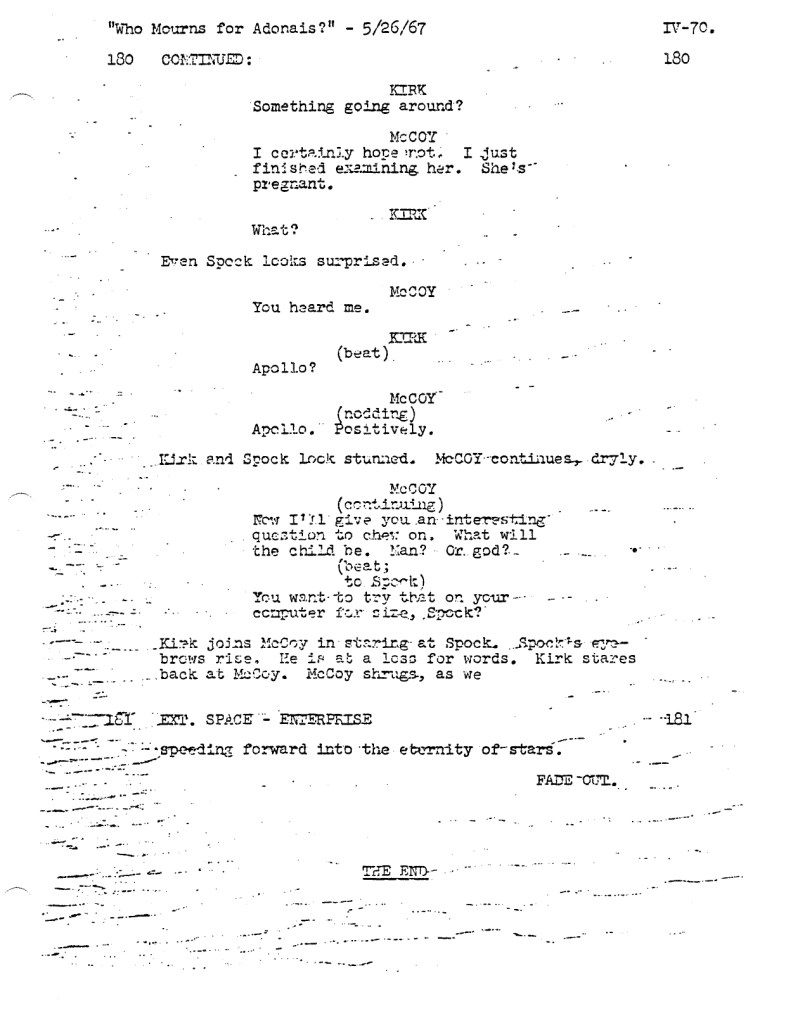Inside Star Trek was a semi-official newsletter, published under the guidance of Gene Roddenberry. This connection gave the writers access to the actors, production crew and sets.
I own the complete run:
- Issues 1 to 12: Inside Star Trek, edited by Ruth Berman
- Issues 13 to 24: renamed Star Trektennial News, edited by Susan Sackett
- Issues 25 to 31: again called Inside Star Trek, edited by Virginia Yable
Here are highlights from issue 7, published early 1969.

That “real now” sound of the Vulcan harp
Reader Joanne Ektarian wrote in to ask if the Vulcan harp or lytherette (a word that also appeared in some fanfiction) actually works and, if not, how its sounds are made.
Editor Ruth Berman replied that the prop does not actually work and Leonard Nimoy does not play the instrument. That’s obvious, but the question generated interesting information on its unusual sound:
The instrument used is a harp (Terran) recorded at a high volume and played at a low volume to produce the ethereal tones of the harp (Vulcan). When the harp was first used, in the first-season show Charlie X, the composer experimented with both harp and guitar, and when Elaan of Troyius was filmed in the third season, a Yamano organ was tried — but in both cases the harp turned out to give the best results.

I am not clear how recording at a high volume and playing at a lower volume would change the sound itself; it would only change the resulting volume. Perhaps Berman meant speed, although again one would think the two opposite approaches would simply balance out. In any case, the sound is indeed otherworldly as early as its first appearance in Charlie X.
Berman refers to the harp in Elaan of Troyius. Don’t remember that? A sequence on the recreation deck was filmed but cut before broadcast, according to the excellent book Star Trek: Lost Scenes.
The costume designer’s favourite costumes


D.C. Fontana interviewed Star Trek costume designer William Ware Theiss. She asked which of his creations were hits with the fans.
The three most popular costumes I remember off-hand were Sherry Jackson’s costume from What Are Little Girls Made Of?…Leslie Parrish’s costume from Who Mourns for Adonais? and Jill Ireland’s costume from This Side of Paradise. I was prepared for and eagerly anticipated the storm over Sherry Jackson’s costume and pleased that Leslie Parrish’s was as well liked by the audience as it was by me. The popularity of Jill Ireland’s costume was a surprise to me inasmuch as it was a rehash of a style my mother wore when I was a little boy, which just goes to show classic designs are always good.



And what were Theiss’ own favourite designs?
I would have to mention Leslie Parrish’s costume first of all…a breathtakingly beautiful girl in one of my favorite scripts. (Because I am hung up on Greek mythology, I always preferred the script in the version the studio killed, wherein the ending becomes bittersweet rather than tragic. Dr. McCoy discovers the young female officer is due to bear the child of Apollo.) I feel this design, while Greek in feeling, was a completely fresh idea, i.e. the front of the dress was held up by the weight of the train which fell over the shoulder to the floor.
Another favorite of mine is the floor-length chiffon poncho over a black lace body stocking worn by Antoinette Bower in Catspaw. The design itself is not that unusual, but through a stroke of luck the finding of just the right black and white cabalistic print chiffon enabled me to portray a sinister, sexy futuristic witch.

I too prefer the original ending of Who Mourns for Adonais? The screened episode ends with Kirk’s sad question, “Would it have hurt us, I wonder, to gather a few laurel leaves?” The script, however, added a closing scene in which McCoy informs the captain and first officer that Parrish is pregnant, and wonders “What will the child be? Man? Or God?” That scene is also in the James Blish novelization of the episode, as Blish was working from the script and had not seen the episode.


The interview also includes this fashion advice for readers:
There are lots of things you can say, like “Listen to your mother.” But, of course, your mother might have rotten taste. Or “Believe in yourself.” But you might have rotten taste. Or, “Read the best teenage fashion magazines.” But they do have rotten taste — too often. I guess the only general advice is only buy things you feel very strongly about.”
Inside Star Trek is an invaluable source of early Star Trek voices. I’ll cover each issue. Click here to read other articles in this series.


6 responses to “Inside Star Trek 7: favourite designs and fashion advice with Bill Theiss”
Hi Peter: I wonder if recording the harp at high volume introduced some distortion into the recording, which was then apparent when the harp was played back at low volume?
Always interesting – thanks for continuing to post these stories!
– Trevor
LikeLike
Do you think so? Maybe. I simply don’t know enough about acoustical engineering. Indeed, I am not even sure if “acoustical engineering” is the correct discipline to cite here, again proving I know nothing about this topic.
It seems to me that the net result would simply be the rate of increase minus the rate of slowdown.
Thanks for reading and commenting, Trevor.
LikeLiked by 1 person
If you turn up your stereo too far, the sound will distort because the speakers can’t handle the input. The same thing happens if you record at too high a level: the tape (likely, in this case) can’t capture all the input. If you then okay it back at a lower volume, that distortion is still there. Just a thought…
LikeLike
I think that’s an excellent explanation, and unless someone comes up with a better one I am going to go with your take.
LikeLiked by 1 person
This might help:
https://en.m.wikipedia.org/wiki/Clipping_(audio)
LikeLike
I think you’ve explained it. This bit from that article seems to match the on-screen result:
Electric guitarists frequently and intentionally overdrive their guitar amplifiers to cause clipping and other distortion in order to get a desired sound.
LikeLiked by 1 person